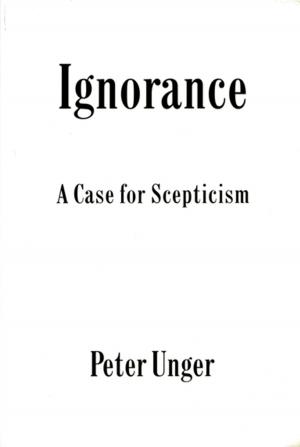| Author: | Claus Kiefer | ISBN: | 9780191628856 |
| Publisher: | OUP Oxford | Publication: | April 5, 2012 |
| Imprint: | OUP Oxford | Language: | English |
| Author: | Claus Kiefer |
| ISBN: | 9780191628856 |
| Publisher: | OUP Oxford |
| Publication: | April 5, 2012 |
| Imprint: | OUP Oxford |
| Language: | English |
The search for a quantum theory of the gravitational field is one of the great open problems in theoretical physics. This book presents a self-contained discussion of the concepts, methods and applications that can be expected in such a theory. The two main approaches to its construction — the direct quantisation of Einstein's general theory of relativity and string theory — are covered. Whereas the first attempts to construct a viable theory for the gravitational field alone, string theory assumes that a quantum theory of gravity will be achieved only through a unification of all the interactions. However, both employ the general method of quantization of constrained systems, which is described together with illustrative examples relevant for quantum gravity. There is a detailed presentation of the main approaches employed in quantum general relativity: path-integral quantization, the background-field method and canonical quantum gravity in the metric, connection and loop formulations. The discussion of string theory centres around its quantum-gravitational aspects and the comparison with quantum general relativity. Physical applications discussed at length include the quantization of black holes, quantum cosmology, the indications of a discrete structure of spacetime, and the origin of irreversibility. This third edition contains new chapters or sections on quantum gravity phenomenology, Horava-Lifshitz quantum gravity, analogue gravity, the holographic principle, and affine quantum gravity. It will present updates on loop quantum cosmology, the LTB model, asymptotic safety, and various discrete approaches. The third edition also contains pedagogical extensions throughout the text. This book will be of interest to researchers and students working in relativity and gravitation, cosmology, quantum field theory and related topics. It will also be of interest to mathematicians and philosophers of science.
The search for a quantum theory of the gravitational field is one of the great open problems in theoretical physics. This book presents a self-contained discussion of the concepts, methods and applications that can be expected in such a theory. The two main approaches to its construction — the direct quantisation of Einstein's general theory of relativity and string theory — are covered. Whereas the first attempts to construct a viable theory for the gravitational field alone, string theory assumes that a quantum theory of gravity will be achieved only through a unification of all the interactions. However, both employ the general method of quantization of constrained systems, which is described together with illustrative examples relevant for quantum gravity. There is a detailed presentation of the main approaches employed in quantum general relativity: path-integral quantization, the background-field method and canonical quantum gravity in the metric, connection and loop formulations. The discussion of string theory centres around its quantum-gravitational aspects and the comparison with quantum general relativity. Physical applications discussed at length include the quantization of black holes, quantum cosmology, the indications of a discrete structure of spacetime, and the origin of irreversibility. This third edition contains new chapters or sections on quantum gravity phenomenology, Horava-Lifshitz quantum gravity, analogue gravity, the holographic principle, and affine quantum gravity. It will present updates on loop quantum cosmology, the LTB model, asymptotic safety, and various discrete approaches. The third edition also contains pedagogical extensions throughout the text. This book will be of interest to researchers and students working in relativity and gravitation, cosmology, quantum field theory and related topics. It will also be of interest to mathematicians and philosophers of science.















